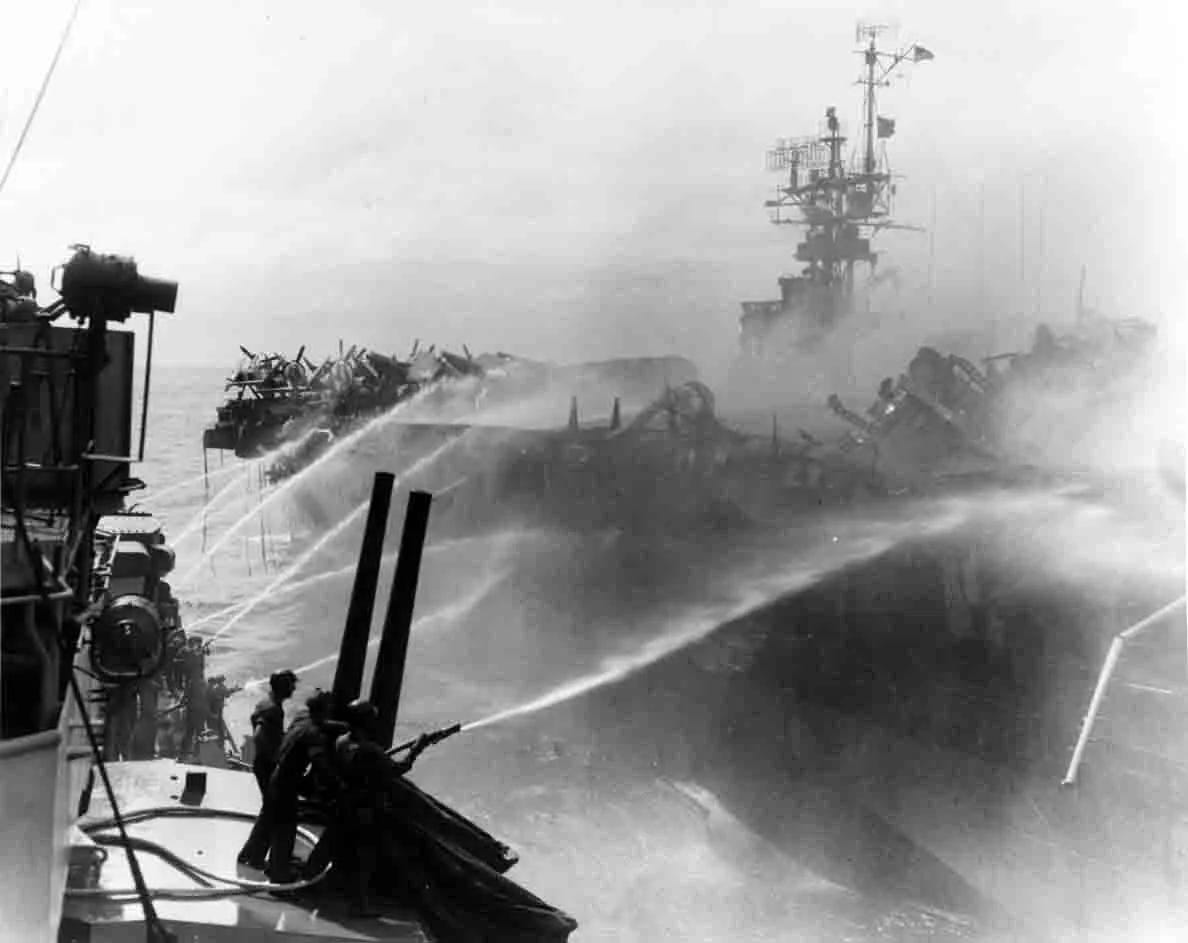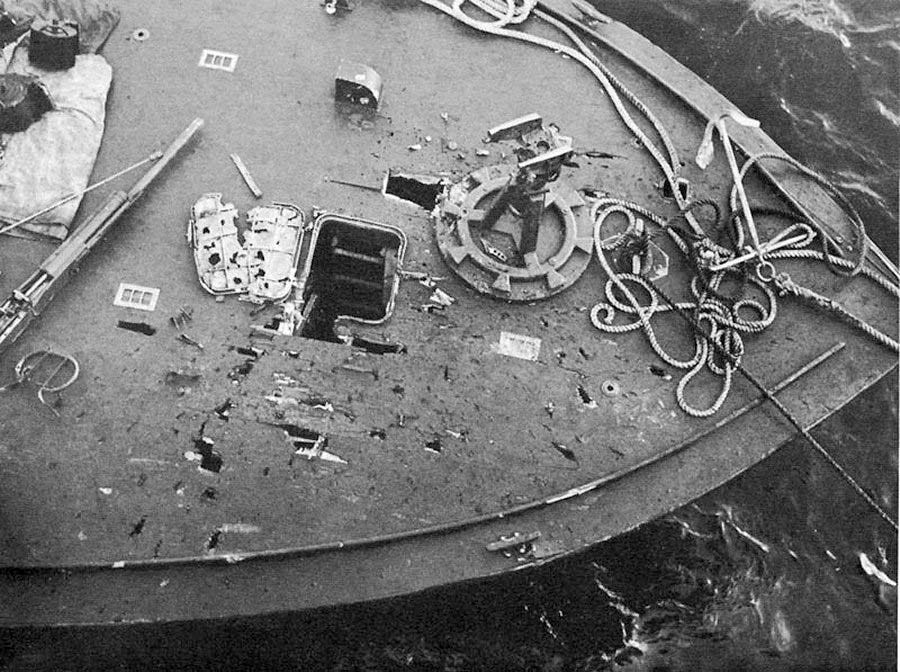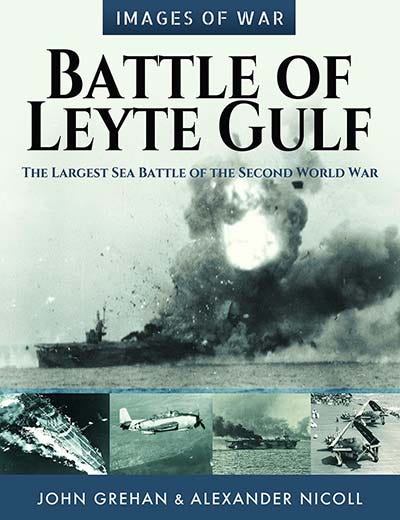The Battle of Leyte Gulf
The 'Action in Surigao Strait' sees Japanese forces decimated - but is just part of the wide-ranging battle that unfolds over days
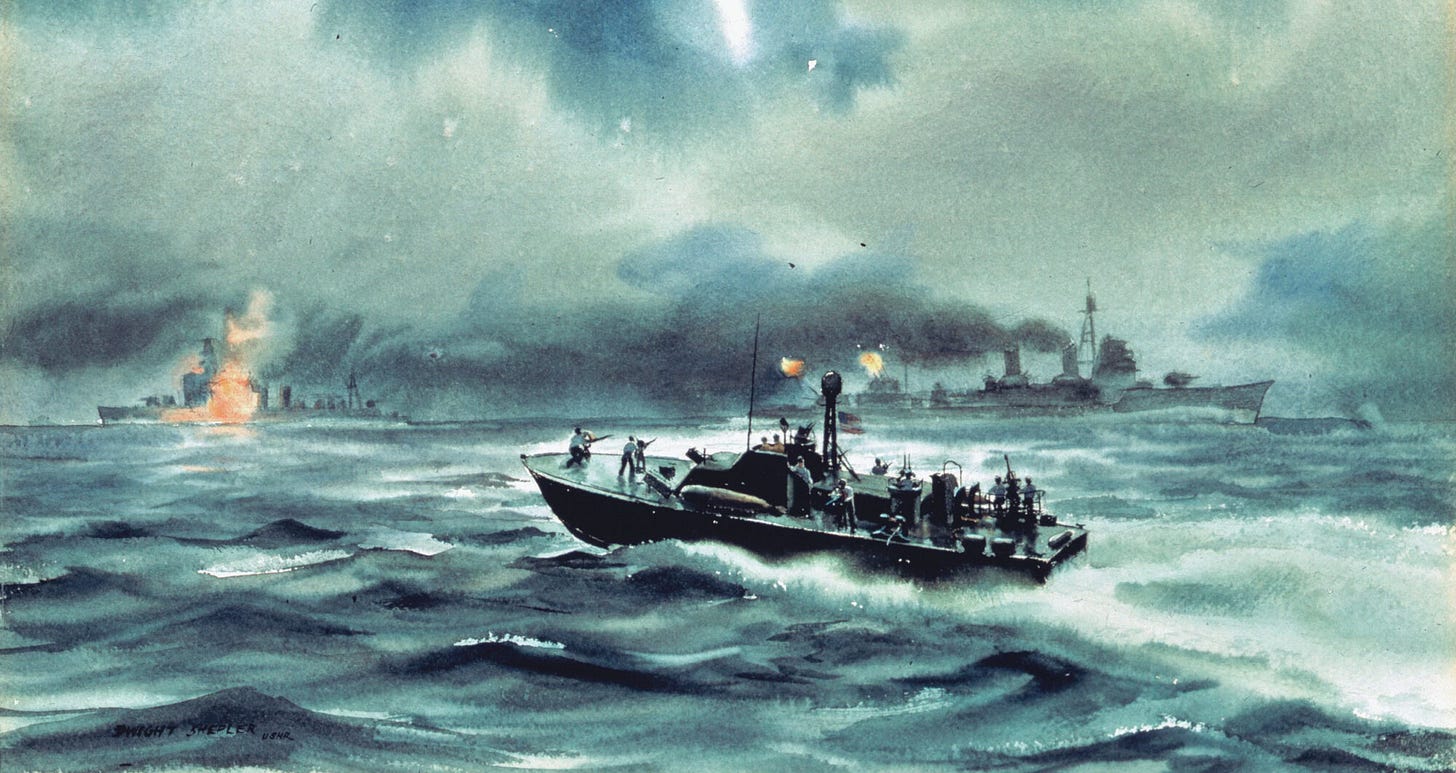
On 20 October 1944, the U.S. Sixth Army began landing on Leyte’s eastern coast, supported by the U.S. Navy’s 3rd and 7th fleets, which were assisted by ships from the Royal Australian Navy. The Japanese were aware that the Americans were poised to attack the Philippines and planned to draw the American warships into one last great battle to try and stave off the otherwise inevitable defeat.
Over the course of 24th to 26th October, the two naval forces engaged in four separate engagements. Involving more than 360 ships and 200,000 naval personnel, the battle was the greatest naval encounter of World War II and possibly the largest naval battle in history.
The Battle of Leyte Gulf—The Largest Sea Battle of the Second World War is an extensive collection of contemporary photographs from the popular Images at War series. Accompanied by concise explanatory text, this is a fine introduction to the course of the wide-ranging battle.
The following excerpt describes the events during the night of 24th/25th October when the Japanese sought to make a direct attack on the landings on Leyte Island:
[A]s Halsey raced off to the north, Kincaid, being fully aware of the approaching danger of Nishimura's Southern Force, sent the 7th Fleet Support Force, under the command of Rear Admiral Jesse B. Oldendorf, southwards and its ships were ready and waiting in the Surigao Strait.
He had a powerful collection of warships with which to defend the Leyte landings, with six battleships (all but one of which had been damaged or sunk at Pearl Harbor but brought back into service), four heavy and four light cruisers, twenty-eight destroyers and thirty-nine motor torpedo boats. Apart from Yamashiro and Fuso, Nishimura had just three heavy and one light cruisers, and eleven destroyers immediately under his command.
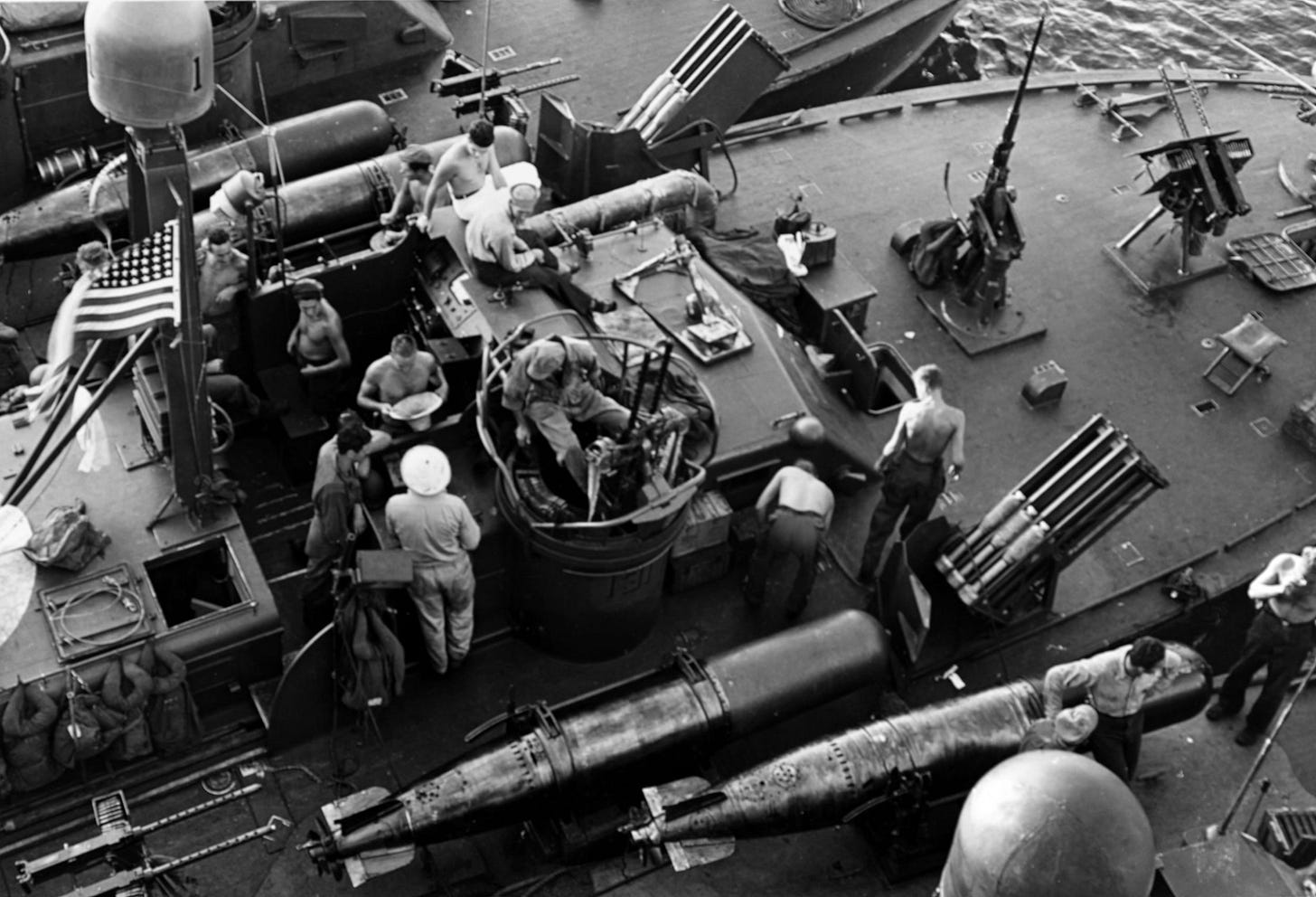
The first sighting of the Japanese force was made by the radar operator on the patrol boat PT- 131 at 22.15 hours. What had been sighted was probably the cruiser Mogami and the Japanese destroyers scouting ahead of the battleships.
Alerted to the approach of the enemy, the MTBs rushed into the attack, firing thirty-four torpedoes at the Japanese ships. Darkness, rain squalls and interference from the enemy's gunfire led to inaccuracy, but seven strikes were claimed. The Japanese opened fire with all their weapons, illuminating the MTBs with searchlights and star shells, and pursuing them with their destroyers.
The next to attack the Southern Force, in the early hours of 25 October, was Captain Jesse Coward's Destroyer Squadron 54. Coward himself, in USS Remey, led a division of three on the east side of the strait while his other two ships moved in from the west. Advancing in the darkness, Coward's eastern group of destroyers launched twenty-seven torpedoes just after 03.00 hours. The Japanese opened fire on the eastern destroyers at 03.01 hours, straddling them and forcing them to turn away without firing their guns. The western two destroyers launched twenty torpedoes at about 03.10 hours, the two groups catching the Japanese in a crossfire. The result was devastating.
Two torpedoes from USS Melvin struck Fuso, inflicting serious damage to the old ship, and she fell out of line. In the noise and confusion of battle, Nishimura did not realise that Fuso was no longer behind him.
Then, at 03.20 hours, a torpedo from Monssen hit Yamashiro, but the battleship was able to continue, though her speed was reduced to 5 knots, with Mogami closing up behind her. Two torpedoes from McDermut hit the destroyer Yamagumo, which blew up with all hands. Another McDermut torpedo struck the destroyer Asagumo, blowing off her bow and inflicting severe damage that would subsequently prove fatal. At least one more McDermut torpedo hit the destroyer Michishio, which began to sink.
More agony was then about to be inflicted upon Nishimura's shattered force. Destroyer Squadron 24, under the command of Captain Kenmore M. McManes, began a torpedo attack, from the western flank in two sections,at 03.30hours.The first section was led by his flagship Hutchins,the second section by HMAS Arunta. The explosion of Yamagumo, caused by McDermut's torpedo, lit the scene, exposing the Japanese warships. The destroyer Shigure dodged four torpedoes from Arunta. One torpedo from USS Killen struck Yamashiro (her second torpedo hit), causing Nishimura to issue a 'general attack' order - in other words all ships attack independently. More torpedoes then slammed into the stricken Michishio, hastening her demise.
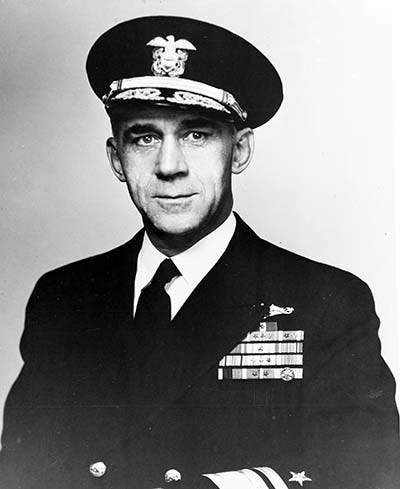
The remorseless assault upon the Japanese Southern Force continued, the next attack being delivered by Captain Roland Smoot's Destroyer Squadron 56. The squadron attacked in three sections. By this time, Yamashiro had shaken off the second torpedo hit and resumed her forward advance with the so-far undamaged Mogami. But Fuso suffered yet another torpedo strike, broke up, or exploded, and sank. A huge underwater explosion ignited a large pool of the highly volatile fuel in which Fusd survivors were swimming. Only about ten of her crew of 1,600 survived, many dying horribly in the burning fuel.
As she struggled on through the Strait, Yamashiro reached the narrows where Oldendorf had assembled his main line of battleships. Behind a screen of cruisers, which included HMAS Shropshire, the six battleships of his force trained their guns toward the approaching enemy.
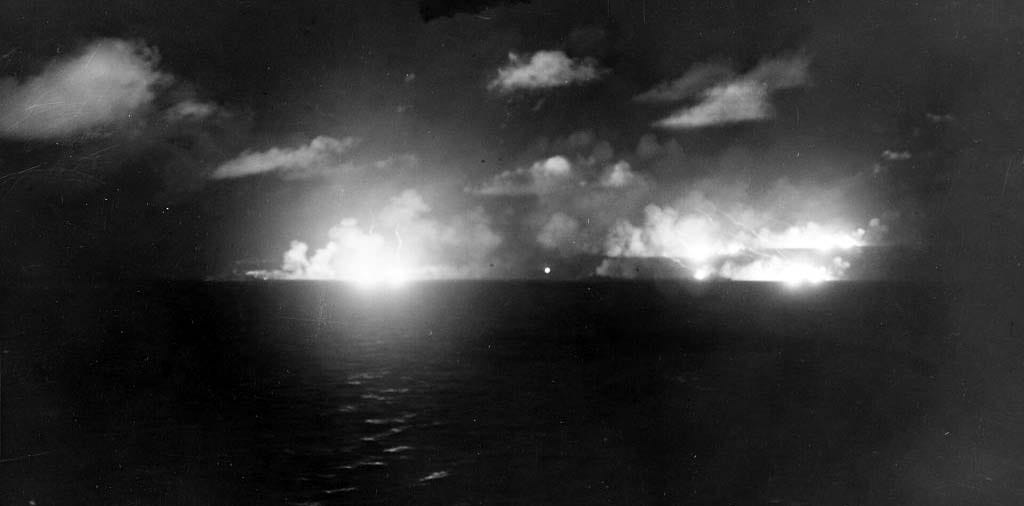
After Oldendorf's cruisers engaged the enemy at 03.51 hours, his battleships' 16-inch guns roared to life two minutes later. Smoot watched the massive broadside from the American battleships: 'The devastating accuracy of this gunfire was the most beautiful sight I have ever witnessed. The arched line of tracers in the darkness looked like a continual stream of lighted railroad cars going over a hill. No target could be observed at first, then shortly there would be fires and explosions, and another enemy ship would be accounted for.'
The rear column of the Southern Force, the Second Striking Force, commanded by Vice Admiral Shima, then appeared in the Strait, with the light cruiser Abukuma being hit by a torpedo fired from a motor torpedo boat. Seeing the remnants of Nishimura's force withdrawing, Shima also turned around, but in the ensuing confusion his flagship Nachi collided with Mogami. Both were badly damaged and later Mogami was abandoned before being sunk after she was shelled by the advancing US cruisers and struck by naval torpedo-bombers.
Only one of Nishimura's seven ships, Shigure, escaped. With its departure, the threat from the Southern Force was well and truly eliminated.
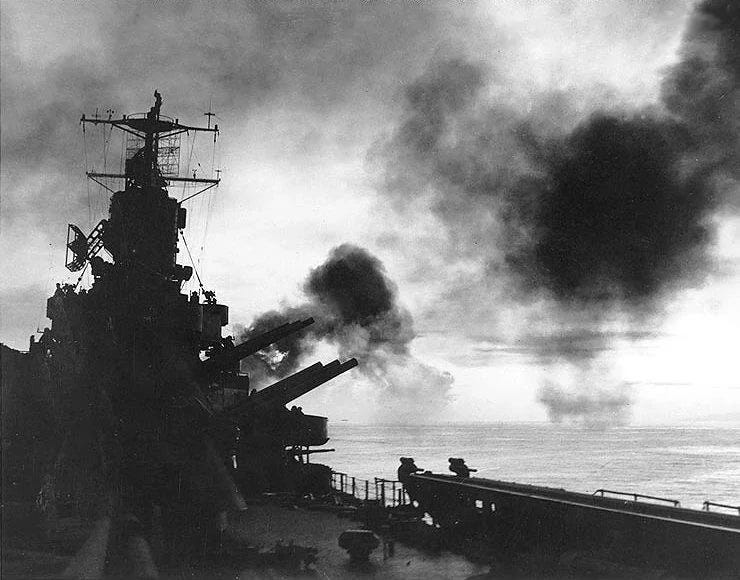
© John Grehan and Alexander Nicoll 2021, 'The Battle of Leyte Gulf - The Largest Sea Battle of the Second World War'. Reproduced courtesy of Pen & Sword Publishers Ltd
Recently on World War II Today:

Battleship Yamato's lucky escape
